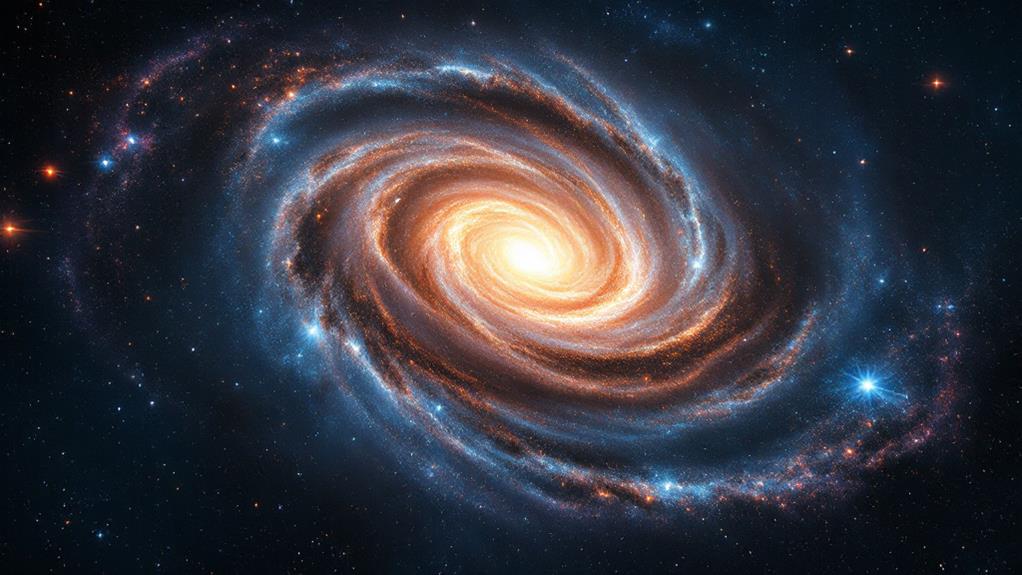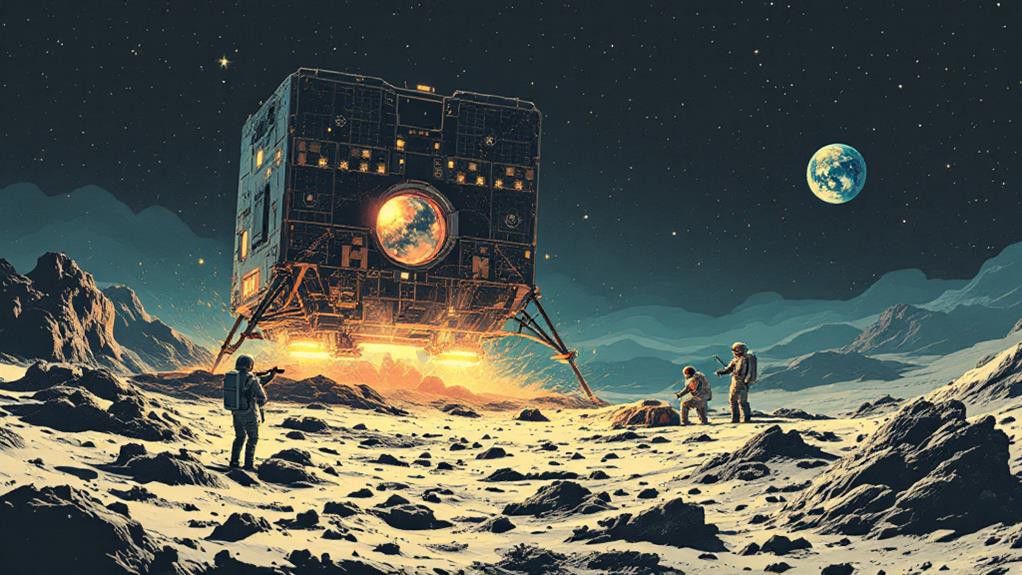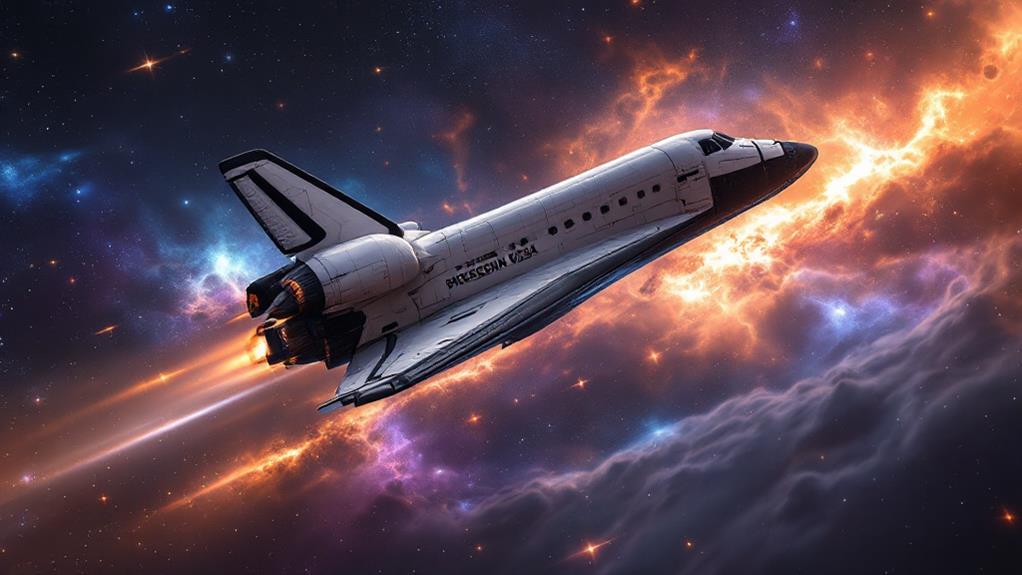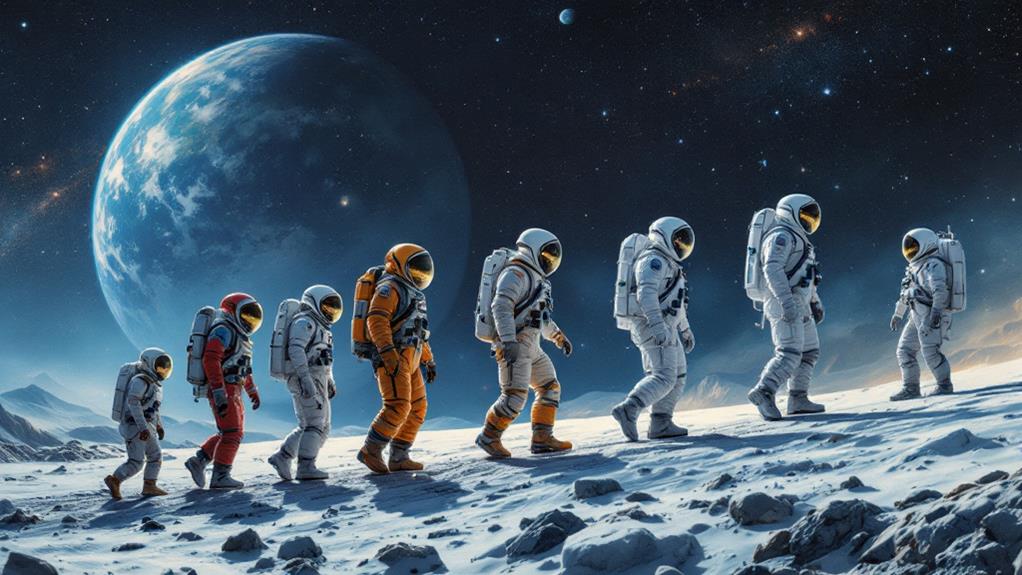Interesting Facts About the Russian Space Program: Pioneers in Space Exploration
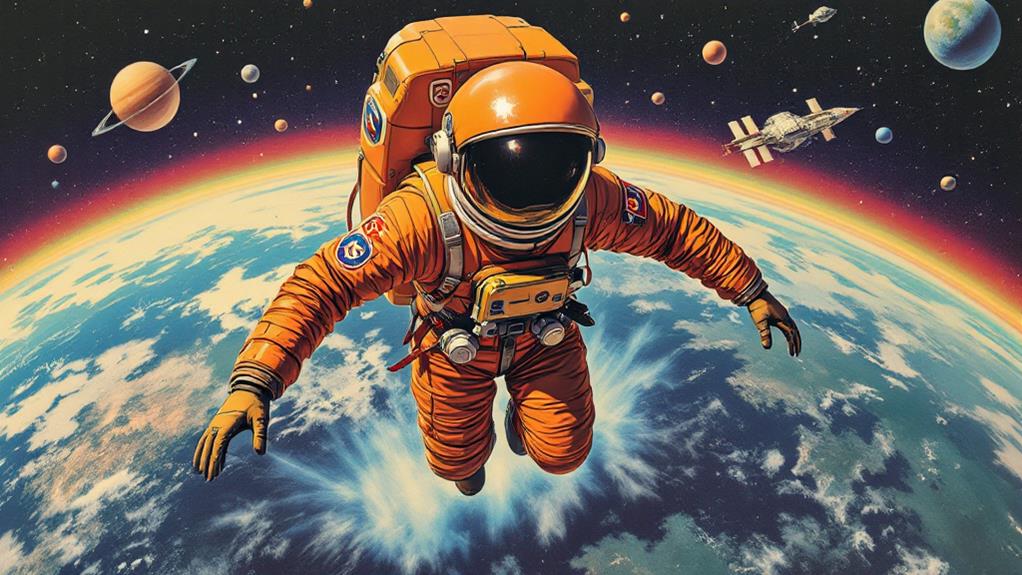
The Russian space program has pioneered numerous space discovery milestones. They launched the first artificial satellite, Sputnik 1, in 1957 and sent the first human, Yuri Gagarin, into space in 1961. Their Venera missions provided groundbreaking data on Venus, while the Mir space station paved the way for long-term space habitation. Russian cosmonauts hold the record for the longest spacewalk, lasting over 8 hours. The innovative Lunokhod rovers investigated the Moon's surface remotely in the 1970s. Today, Russia continues to contribute substantially to the International Space Station. These achievements only scratch the surface of their impressive space legacy.
First Satellite: Sputnik 1
The space race milestone of Sputnik 1 marked the dawn of the satellite era. On October 4, 1957, the Soviet Union successfully launched this first artificial Earth satellite, catching the world by surprise. You might be amazed to learn that Sputnik 1 was about the size of a beach ball, weighing only 83 kg (183 pounds). Despite its small size, it made a big impact on history.
The launch of Sputnik 1 wasn't without its challenges. Engineers had to overcome numerous technical obstacles, including developing a rocket powerful enough to reach orbit. Once in space, Sputnik 1 orbited Earth every 96 minutes, transmitting radio signals back to Earth. These signals provided helpful data on the ionosphere and helped scientists study the effects of the atmosphere on radio signals.
Sputnik 1's scientific discoveries paved the way for future space missions. It proved that artificial satellites could survive in space and transmit data back to Earth. This breakthrough led to advancements in communication, weather forecasting, and navigational technologies that you use today. Sputnik 1's legacy continues to influence modern space exploration, reminding us of the incredible achievements possible when pushing the boundaries of human knowledge.
Yuri Gagarin's Historic Flight
Nearly four years after Sputnik 1's launch, the Soviet Union achieved another monumental space milestone. On April 12, 1961, Yuri Gagarin became the first human to voyage into outer space, orbiting the Earth in the Vostok 1 spacecraft.
You might be surprised to learn that Gagarin's selection for this historic mission wasn't a foregone outcome. He was part of an intensive training program alongside 19 other cosmonauts. The candidates underwent rigorous physical and psychological tests, including medical experiments to assess their ability to withstand the extreme conditions of spaceflight.
Gagarin's flight lasted 108 minutes, during which he completed one orbit around the Earth. He reached an altitude of 327 kilometers (203 miles) and experienced weightlessness for the first time in human history. Throughout the mission, he maintained communication with ground control, reporting his observations and physical condition.
Upon his return, Gagarin became an international celebrity and a symbol of Soviet technological prowess. His historic flight not only marked a significant achievement in space exploration but also intensified the Space Race between the Soviet Union and the United States, spurring further advancements in space technology and exploration.
Venera Missions to Venus

You might be surprised to learn that the Soviets achieved several pioneering milestones during these missions. In 1967, Venera 4 became the first spacecraft to transmit data from another planet's atmosphere, revealing essential information about Venus' atmospheric composition. The mission discovered that Venus' atmosphere was primarily carbon dioxide, with traces of nitrogen and oxygen.
Venera 7, launched in 1970, made history as the first spacecraft to successfully land on another planet and transmit data back to Earth. Later missions, like Venera 9 and 10, captured the first-ever images of Venus' surface, showing a desolate environment of rocks and dust.
The Venera program's crowning achievement came with Venera 13 and 14 in 1981, which obtained detailed color photographs and analyzed Venus' soil composition, providing unparalleled insights into this hostile world.
Mir Space Station
Mir, a marvel of Soviet space engineering, marked a significant milestone in human spaceflight. Launched in 1986, it was the first modular space station, allowing for expansion and upgrades over time. You'd be amazed by its innovative space station design, which included six docking ports for spacecraft and additional modules.
Cosmonauts training for Mir missions was rigorous, preparing them for long-duration stays in space. They'd spend months practicing spacewalks, conducting scientific experiments, and learning to operate the station's systems. Mir hosted crews from various countries, promoting international cooperation in space exploration.
During its 15-year lifespan, Mir faced numerous challenges, including fires, collisions, and equipment failures. Yet, it persevered, providing essential data on the effects of long-term spaceflight on the human body and serving as a testbed for future space station technologies.
Mir's legacy lives on in the International Space Station, which incorporated many lessons learned from the Soviet space station. Its achievements paved the way for continuous human presence in space, demonstrating the feasibility of long-duration missions beyond Earth's orbit.
Longest Spacewalk Record
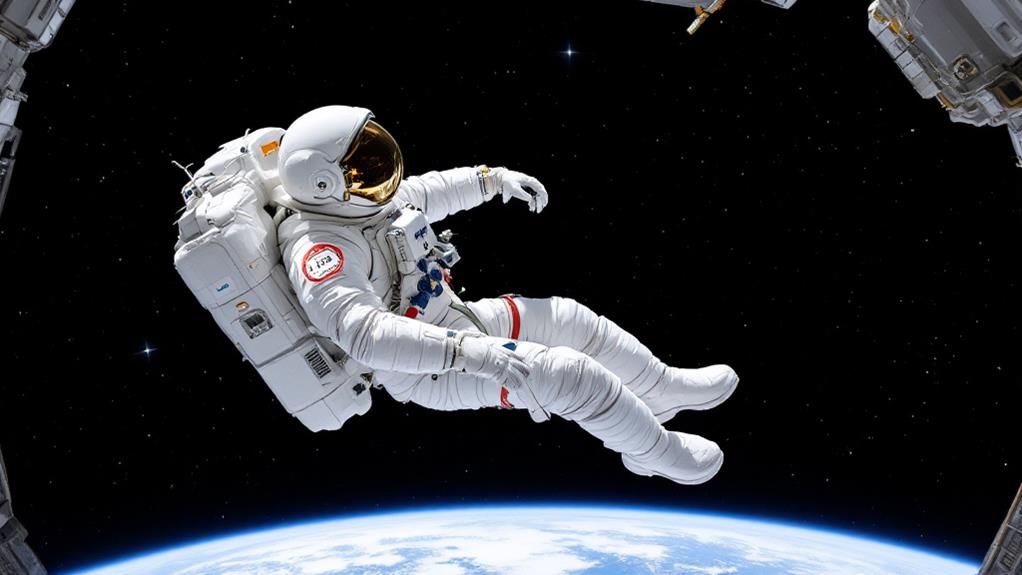
While Mir's achievements were impressive, Russian cosmonauts have also set extraordinary records beyond the confines of their space stations. One of the most notable is the longest spacewalk duration in history, set by Russian cosmonauts Oleg Kononenko and Sergei Prokopyev on December 11, 2018.
During this record-breaking extravehicular activity (EVA), Kononenko and Prokopyev spent an astounding 8 hours and 13 minutes outside the International Space Station. They were tasked with inspecting a mysterious hole in the Soyuz spacecraft's hull, which had caused a minor air leak months earlier.
This feat surpassed the previous record of 8 hours and 7 minutes, held by NASA astronauts since 2001. It's worth noting that Russian spacewalk safety procedures are rigorous, involving extensive training and equipment checks to guarantee cosmonaut well-being during these lengthy EVAs.
The Russian space program's commitment to pushing boundaries is evident in this achievement. By extending the duration of spacewalks, they've not only set records but also expanded our understanding of human endurance in the harsh environment of space.
Lunokhod Moon Rovers
Long before NASA's Mars rovers captivated the public imagination, the Soviet Union pioneered remote-controlled lunar exploration with its Lunokhod program. These moon rovers were the first robotic vehicles to successfully operate on another celestial body, paving the way for future unmanned lunar landings and exploration.
You might be surprised to learn that the Lunokhod program began in the 1960s, with the first successful mission, Lunokhod 1, landing on the Moon in 1970. These eight-wheeled, bathtub-shaped rovers were designed to withstand the harsh lunar environment and conduct scientific experiments. They were equipped with cameras, radiation detectors, and instruments for lunar sample collection.
Lunokhod 1 operated for nearly a year, far exceeding its expected three-month lifespan. It covered over 10 kilometers of lunar terrain, sending back important data and images. Lunokhod 2, launched in 1973, traveled even further, covering 39 kilometers in just four months. These missions provided critical information about the Moon's surface composition, radiation levels, and topography, significantly advancing our understanding of Earth's natural satellite.
Ongoing International Space Station Contributions
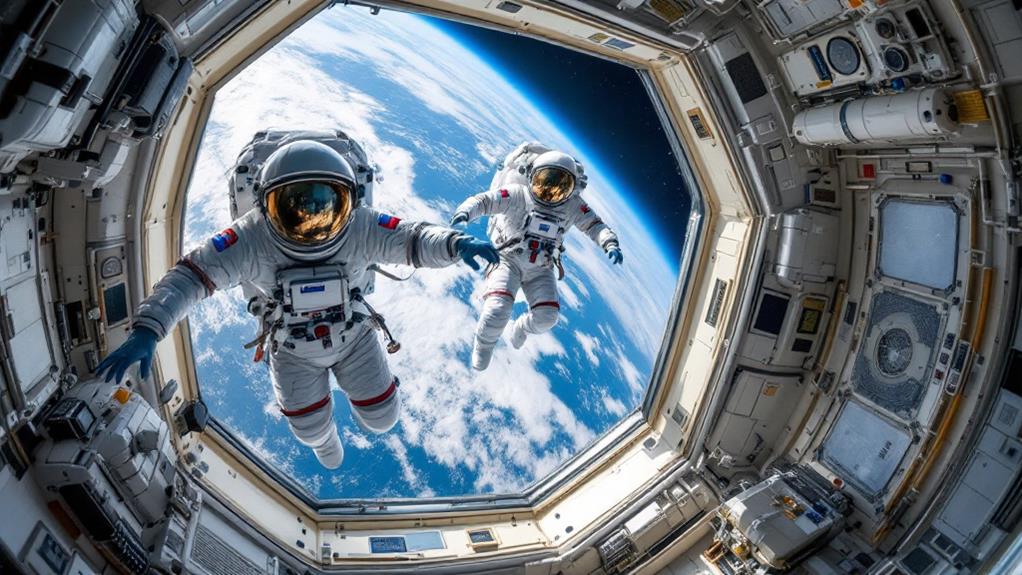
Despite the end of the Soviet era, Russia continues to play a crucial role in the International Space Station (ISS) program. You'll find that Russia's contributions are essential to the station's operations and scientific efforts. They've been providing regular crew and cargo transport through their Soyuz spacecraft and Progress resupply vehicles.
Russia's segment of the ISS includes several modules, such as Zvezda, which serves as the station's living quarters and life support systems hub. They've also added Poisk and Rassvet, which function as docking ports and research facilities. In the spirit of international scientific cooperation, Russian cosmonauts work alongside astronauts from other countries, conducting experiments and maintaining the station.
You'll be interested to know that Russia is developing new module developments for the ISS. The Nauka Multipurpose Laboratory Module, launched in 2021, enhances the station's research capabilities and provides additional docking ports. Russia's ongoing commitment to the ISS program demonstrates their dedication to space exploration and collaboration with global partners, ensuring the continuation of human presence in low Earth orbit.
